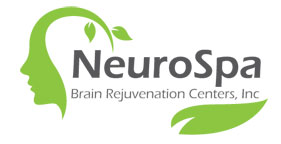
If you or someone you know lives with an attention deficit disorder, or ADD, you know how real it is. Unfortunately, many people who aren’t familiar with these types of disorders fail to understand their complexities. Moreover, you’ve likely heard people conflating them with laziness and, even worse, foolishness. These common misconceptions can hinder people from seeking treatment for their attention deficit disorders; keep reading to learn more.
Misconception: ADD Isn’t Real
Many people truly believe that ADD is not a real medical condition—they tend to look at it as a choice or as just plain laziness. However, ADD is a neurological disorder that can severely affect executive function and energy levels. In fact, the structure of a brain with ADD is quite different from that of a neurotypical one. Studies have revealed that the areas of the brain that are responsible for executive function have decreased blood flow in individuals with ADD. A decrease in blood flow simply means less brain activity.
Misconception: Medication Is the Only Treatment
To mitigate and treat the effects we described above, doctors often prescribe amphetamines, which increase blood flow and stimulation to the affected areas of the brain. However, medication isn’t the only avenue for treatment. Many people don’t seek treatment because they believe medication is the only way to treat ADD. But other noninvasive treatment options that don’t involve stimulants are also available.
One prime example is transcranial magnetic stimulation, or TMS. This is a fantastic treatment plan for individuals with ADD. What’s more, it’s FDA approved and noninvasive. The term may seem complex, but the way it works is quite simple. After mapping your brain activity, a professional will stimulate the underactive areas to increase blood flow. If you’re looking for a TMS center in Orange County, CA, NeuroSpa is happy to help you live to your fullest capabilities.
Misconception: ADD Presents the Same in Everyone
All too often, people live with undiagnosed ADD for years without seeking treatment because their symptoms don’t present in the way they “should.” Unfortunately, this is one of the most common misconceptions about attention deficit disorder, and it’s a huge reason why so many people with this disorder fall under the radar.
When diagnosing ADD, many doctors look for hyperactivity across the board. However, there are different types of ADD, and the symptoms can vary greatly. For example, many girls and women with ADD are more likely to present as inattentive rather than hyperactive.
That’s why working with a clinic that knows how to spot ADD in someone, regardless of their age or gender, is vitally important. NeuroSpa scans the brain to detect abnormal levels of activity. You won’t have to worry about proving your disability, allowing you to proceed right to treatment as soon as possible.

